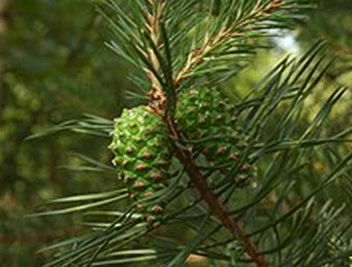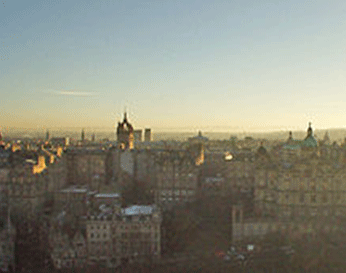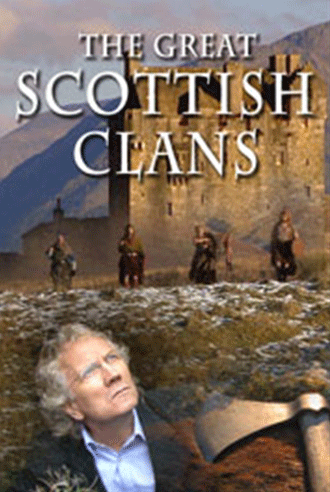MacGregor

-
Clan Territory:
Argyll, Stirlingshire and The Trossachs -
Clan Chief:
Sir Malcolm MacGregor of MacGregor became 24th Chief of the MacGregor Clan in 2003. -
Clan Plant Badge:

Scots Fir TreeWhen the wearing of tartan was outlawed after the 1745 Jacobite rebellion, clansmen wore their clan's plant badge as an act of defiance and identification. For MacGregors it was somewhat different, for the MacGregors were legendary outlaws, known as the Children of the Mist, and the victims of State oppression.
Clan History:
-

the MacGregor Clan Tartan
Rob Roy MacGregorFollowing the MacGregor massacre of more than 140 Colquhouns â and a party of schoolboys who came to watch - at the Battle of Glen Fruin in 1603, King James VI outlawed the MacGregor Clan. Under the Proscriptive Acts of Clan Gregor, which came into force on the 3rd of April 1603 the name MacGregor "altogidder abolished" and bearing the MacGregor name was punishable by death.
MacGregor women were branded and their children were given to other families. MacGregors couldn't travel in groups of more than two and couldn't cut meat with a blade. The men were executed, the women were stripped bare, branded, and whipped through the streets, and women and children were sold into slavery for Britain's new colonies in North America. MacGregors were denied food, water and shelter. They were denied the Sacraments of Baptism, Holy Communion, marriage, and last rites. They were hunted with dogs like vermin. And MacGregor heads could be sold to the government to attain pardon for thievery and murder. It was a licence to kill - and for big rewards: £1,000 for the clan's most important members.
In the spring of 1604, Alasdair MacGregor of Glenstrae, Chief and Laird of MacGregor was hung with thirty of his warrior clansmen against the western end of St Giles Kirk.

The crown of St Giles on the Edinburgh skylineToday, the Heart of Midlothian marks the spot where he died and the direct male line of the MacGregor chiefs was extinguished. This gave rise to what is now an old Highland custom, when you pass here you spit on it.

The Heart of Midlothian

the MacGregor Clan
Illustration by R.R. MaclanThe most famous MacGregor's life reads like a western. Such was his notoriety that he became a legend in his lifetime as a bandit, an outlaw, a rebel and loveable rogue, a friend to the poor and saviour of the clan name, a man whose exploits would restore some of the lost dignity. Born on the shores of Loch Katrine in 1671, some of the Rob Roy legend is true. And just when he was at his lowest point, fiction came to his rescue.
In 1723 Daniel Defoe, author of Moll Flanders and Robinson Crusoe, published a fictionalised account of Rob's life called Highland Rogue and Rob became a legend in his own lifetime. The book was so popular King George I pardoned Rob, just as he was about to be transported. And when Sir Walter Scott's Rob Roy was published in 1817 it sold 10,000 copies in a fortnight. In 1878 the football team Kirkintilloch Rob Roy was founded in Rob's memory.

Rob Roy MacGregor
From an 1820s engraving

Rob Roy's grave at Balquidder, where he is buried beside
his wife Helen and his sons Coll and Robin Oig
The story of the MacGregor Clan, their origins and history, the story of Grigor Roy and Marion Campbell, the Battle of Glen Fruin and the outlawing of the clan, their most famous member and the adventures of his sons after their father's death is told in the Galloglas DVD, MacGregor. Filmed on location to the highest standards the MacGregor Clan features unique stories that interweave romance, adventure, murder, bravery and betrayal, filmed across the seasons and set against stunning landscapes.

-
And finally:
Gregor MacGregor presented his credentials to the Court of St James in 1820. He called himself His Serene Highness Gregor I, Prince of Poyais, claimed he had served in the British army, but left for Venezuela in 1811, when it was the first Latin American country to gain independence. He received a commission from Simon Bolivar himself. He had married Bolivar's niece, but took to sea to capture one of the great Spanish Main fortresses off the Mosquito Coast, in what is now Nicaragua, where he founded his imaginary kingdom of Poyais. These accomplishments were nothing compared to the achievement of passing himself off as sovereign of a dynasty which had recently been outlawed in his own country.
The Lord Mayor of London sponsored a loan of £200,000 and many Scotsmen volunteered to emigrate to Poyais, exchanging their notes and coins of the realm for the Poyais banknotes Gregor had printed in Edinburgh. His first Scottish colonists had to be rescued from the Mosquito Coast, by which time Gregor was working his magic in France. He returned to Venezuela where he spent the remainder of his days living on a hero's pension.

General Gregorio MacGregor
Born in Edinburgh 1786, Died Venezuela 1845